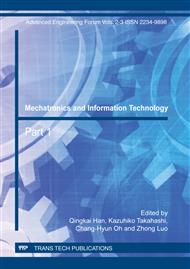p.234
p.239
p.243
p.249
p.253
p.257
p.261
p.269
p.273
Investigation on a Novel Sensing Technology for the Detection of Blood Coagulation Based on Liquid Resonance Characteristics
Abstract:
Based on the liquid resonance principle, a novel sensing technology for detecting the blood coagulation was proposed. The course of blood coagulation can alter its inherent properties, such as viscosity and density. As a result, liquid resonance frequency of blood will change with the blood agglomeration. A gold-plated Interdigital Electrode (IDE) was fabricated and a detection system was designed for the acquisition of the frequency. The activated partial thromboplastin time (APTT) was measured using the IDE and the detection system. For four volunteers, the activated partial thromboplastin time measured is 22-37 seconds, which are consistent with the reference value 22-38 seconds. The results indicated that the liquid resonance frequency can characterize the course of blood coagulation.
Info:
Periodical:
Pages:
253-256
Citation:
Online since:
December 2011
Authors:
Keywords:
Permissions:
Share:
Citation:


